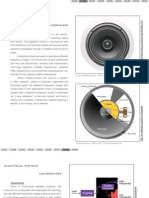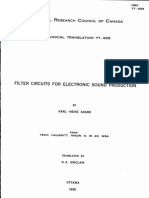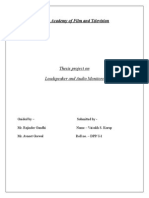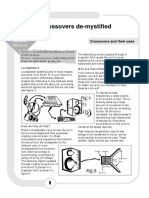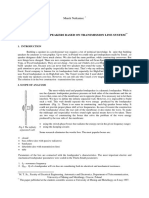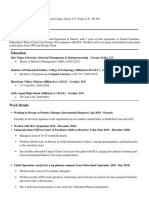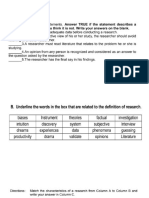0% found this document useful (0 votes)
36 views3 pagesIntroduction
The document discusses the complexities involved in designing a frequency-dividing network for loudspeaker systems, particularly focusing on the challenges posed by frequency-dependent driver impedances and varying efficiencies. It highlights the advantages of using active crossover networks, which allow for better control of driver damping and system distortion, and offers flexibility in driver selection. The paper aims to classify different network designs and propose an optimal filter class based on radiation patterns and transient responses.
Uploaded by
FernandoSerranoRamosCopyright
© © All Rights Reserved
We take content rights seriously. If you suspect this is your content, claim it here.
Available Formats
Download as DOCX, PDF, TXT or read online on Scribd
0% found this document useful (0 votes)
36 views3 pagesIntroduction
The document discusses the complexities involved in designing a frequency-dividing network for loudspeaker systems, particularly focusing on the challenges posed by frequency-dependent driver impedances and varying efficiencies. It highlights the advantages of using active crossover networks, which allow for better control of driver damping and system distortion, and offers flexibility in driver selection. The paper aims to classify different network designs and propose an optimal filter class based on radiation patterns and transient responses.
Uploaded by
FernandoSerranoRamosCopyright
© © All Rights Reserved
We take content rights seriously. If you suspect this is your content, claim it here.
Available Formats
Download as DOCX, PDF, TXT or read online on Scribd
/ 3












